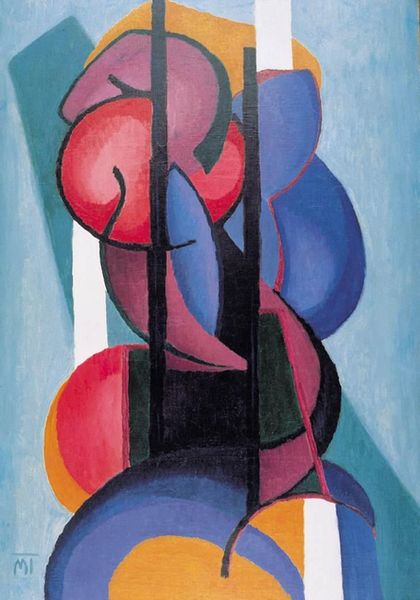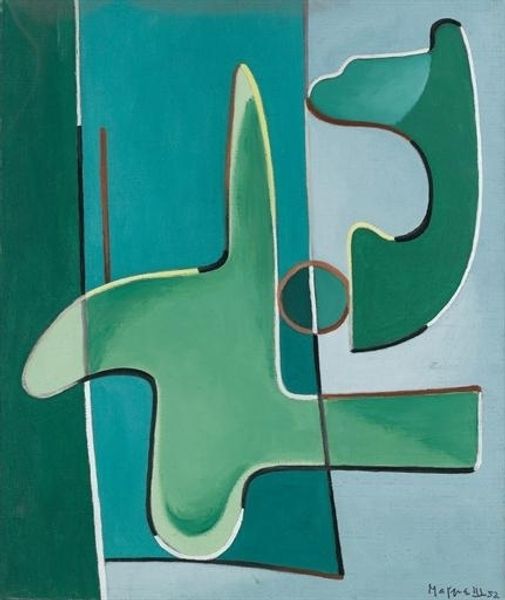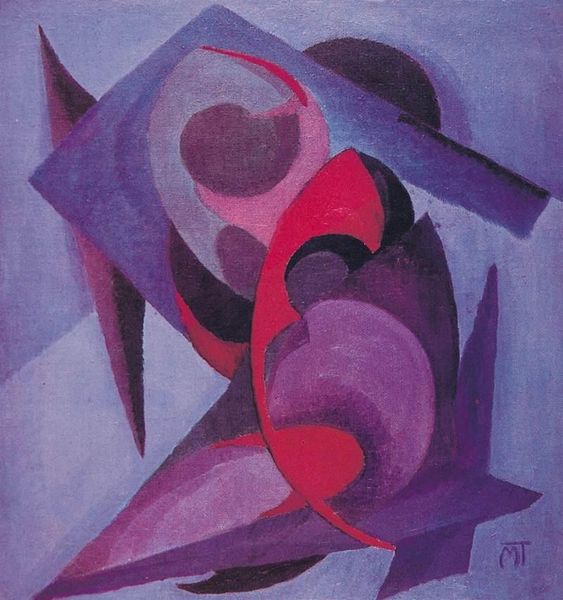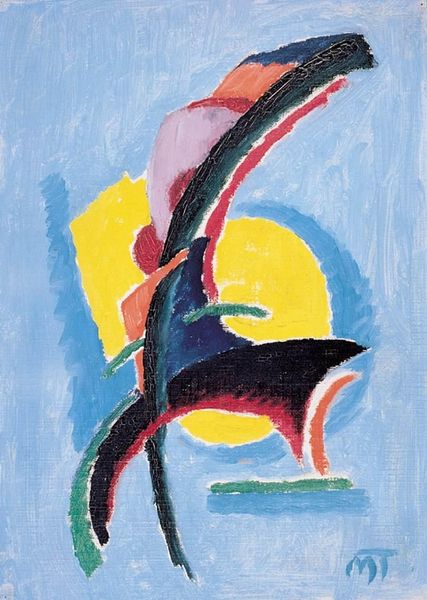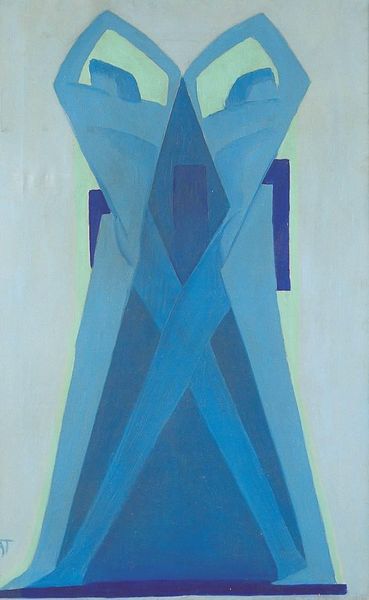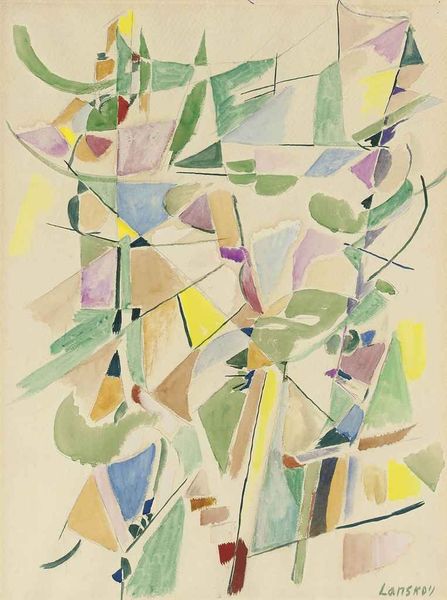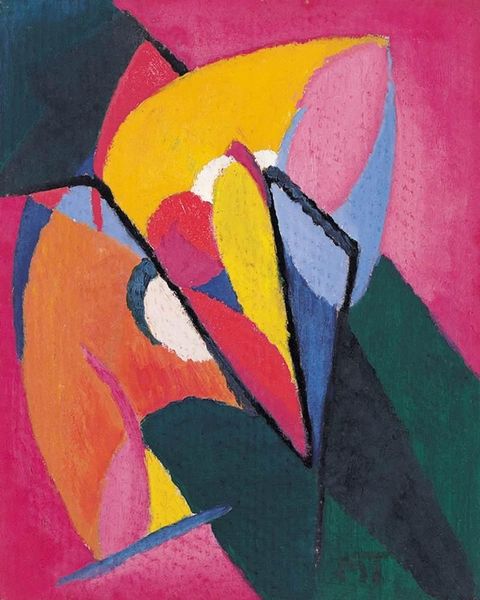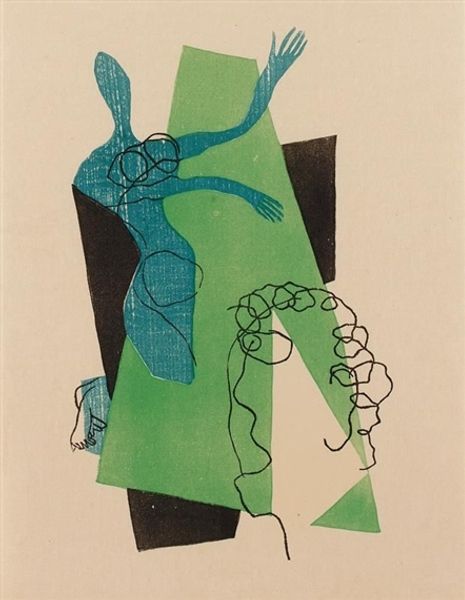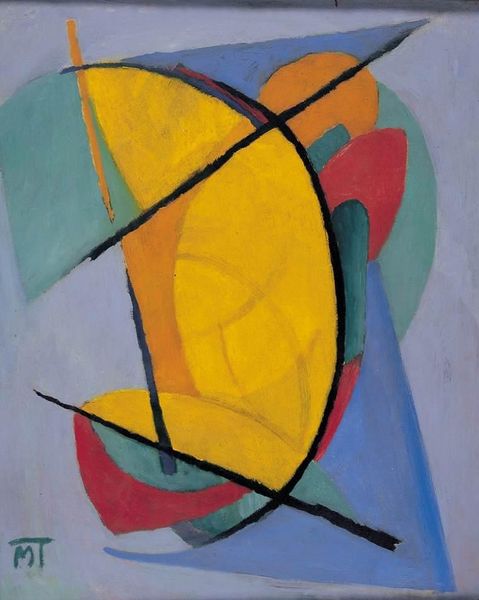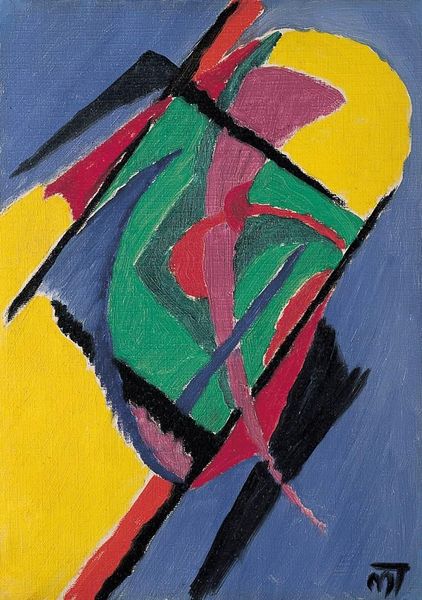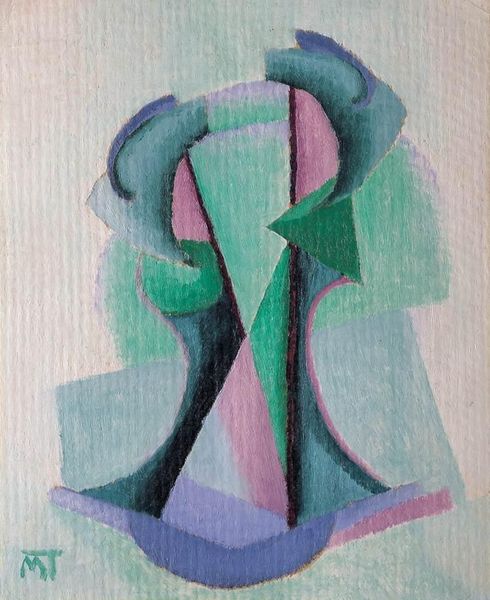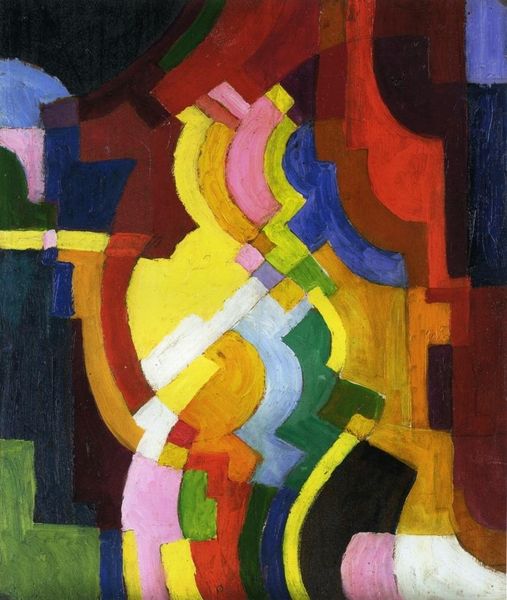
Copyright: Janos Mattis-Teutsch,Fair Use
Editor: So, here we have "Composition" by Janos Mattis-Teutsch, painted in 1925. It’s an acrylic painting, and I’m struck by how these stacked geometric shapes feel both balanced and precarious at the same time. How do you interpret this work? Curator: That tension is key. Looking at "Composition," I see echoes of early 20th-century utopianism crashing against the realities of the interwar period. Mattis-Teutsch, deeply influenced by expressionism and the search for spiritual renewal, created these abstract forms to evoke universal harmonies. But can we truly divorce abstraction from the social upheavals of its time? Editor: I hadn’t thought of it that way. The bright colours seemed optimistic, but now I see a kind of… fragility. Like the dream of perfect social order is vulnerable. Curator: Exactly. Think about the rise of fascism, the fracturing of empires – all happening as artists were exploring these radically new visual languages. Does this geometric stacking, this striving for balance, become a metaphor for societal hopes clinging on for dear life? Consider also the painting’s defiance of traditional representation, could this rejection mirror the rejection of outdated social structures? Editor: So, the artwork isn’t just about shapes and colours, but about the artist responding to a specific historical moment and all its complexities? Curator: Precisely. It asks us to consider: whose voices were amplified, and whose were suppressed, in the clamor for progress? Where do we find our own points of connection, and our own unease, within these supposedly universal forms? Editor: That gives me so much to think about. I’m beginning to see abstraction as less of an escape and more of a reflection of the world around it. Curator: Indeed. And hopefully a provocation to reimagine it.
Comments
No comments
Be the first to comment and join the conversation on the ultimate creative platform.
